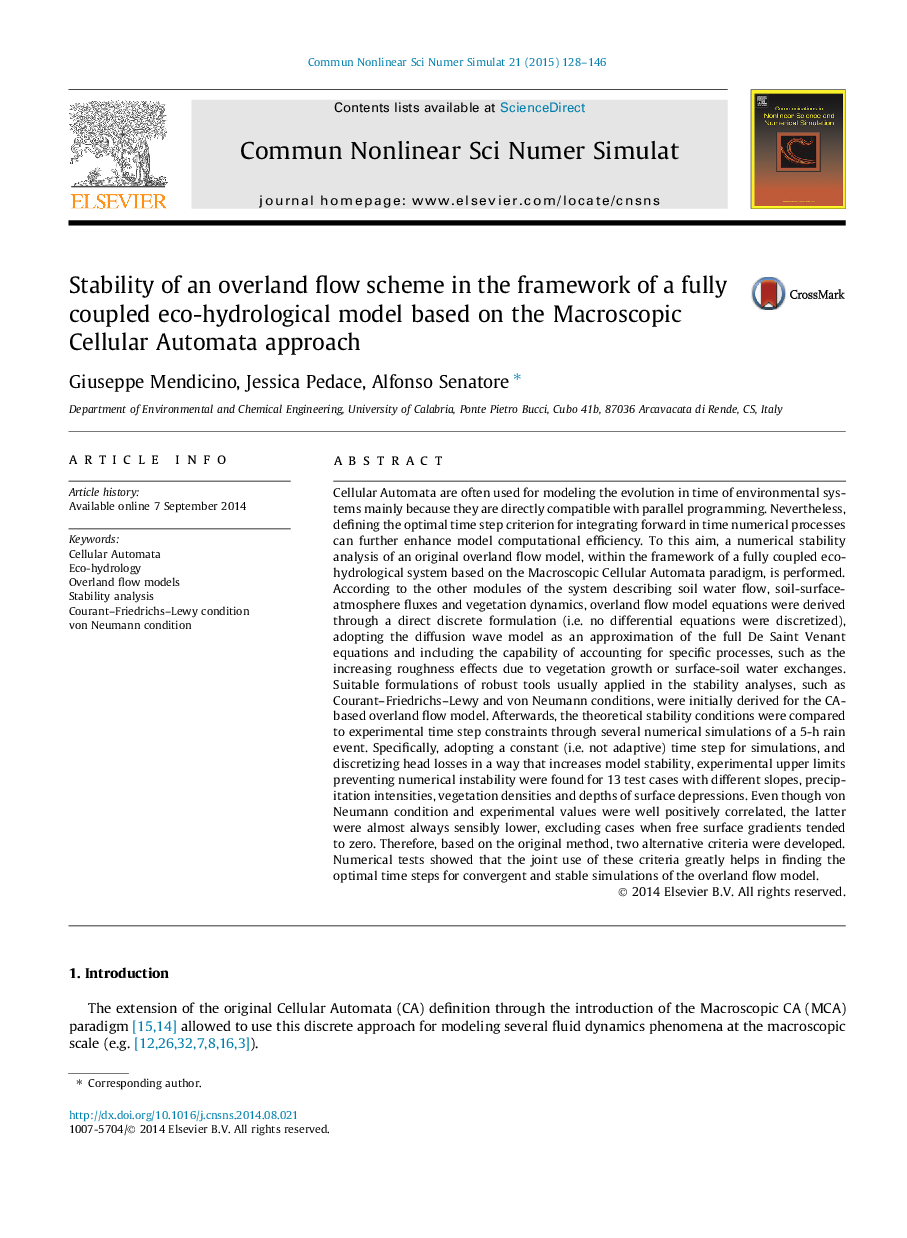| کد مقاله | کد نشریه | سال انتشار | مقاله انگلیسی | نسخه تمام متن |
|---|---|---|---|---|
| 755694 | 1462624 | 2015 | 19 صفحه PDF | دانلود رایگان |
• An original overland flow scheme is added to a MCA-based ecohydrological model.
• Overland flow model equations are derived through a direct discrete formulation.
• CFL and von Neumann conditions are derived for the MCA-based overland flow model.
• Theoretical stability conditions are compared to experimental time step constraints.
• Two alternative criteria are developed to find the optimal time step.
Cellular Automata are often used for modeling the evolution in time of environmental systems mainly because they are directly compatible with parallel programming. Nevertheless, defining the optimal time step criterion for integrating forward in time numerical processes can further enhance model computational efficiency. To this aim, a numerical stability analysis of an original overland flow model, within the framework of a fully coupled eco-hydrological system based on the Macroscopic Cellular Automata paradigm, is performed. According to the other modules of the system describing soil water flow, soil-surface-atmosphere fluxes and vegetation dynamics, overland flow model equations were derived through a direct discrete formulation (i.e. no differential equations were discretized), adopting the diffusion wave model as an approximation of the full De Saint Venant equations and including the capability of accounting for specific processes, such as the increasing roughness effects due to vegetation growth or surface-soil water exchanges. Suitable formulations of robust tools usually applied in the stability analyses, such as Courant–Friedrichs–Lewy and von Neumann conditions, were initially derived for the CA-based overland flow model. Afterwards, the theoretical stability conditions were compared to experimental time step constraints through several numerical simulations of a 5-h rain event. Specifically, adopting a constant (i.e. not adaptive) time step for simulations, and discretizing head losses in a way that increases model stability, experimental upper limits preventing numerical instability were found for 13 test cases with different slopes, precipitation intensities, vegetation densities and depths of surface depressions. Even though von Neumann condition and experimental values were well positively correlated, the latter were almost always sensibly lower, excluding cases when free surface gradients tended to zero. Therefore, based on the original method, two alternative criteria were developed. Numerical tests showed that the joint use of these criteria greatly helps in finding the optimal time steps for convergent and stable simulations of the overland flow model.
Journal: Communications in Nonlinear Science and Numerical Simulation - Volume 21, Issues 1–3, April 2015, Pages 128–146
